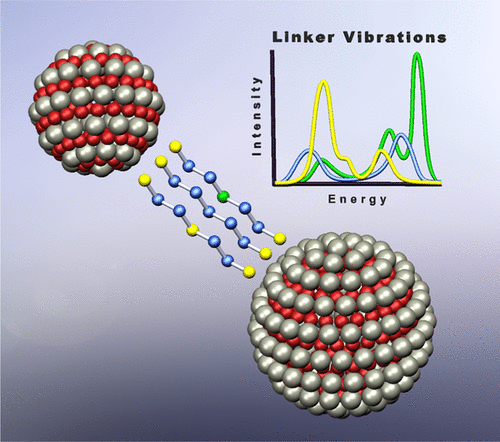当前位置:
X-MOL 学术
›
J. Phys. Chem. C
›
论文详情
Our official English website, www.x-mol.net, welcomes your
feedback! (Note: you will need to create a separate account there.)
Tuning Quantum Dots Coupling Using Organic Linkers with Different Vibrational Modes
The Journal of Physical Chemistry C ( IF 3.3 ) Pub Date : 2020-06-25 , DOI: 10.1021/acs.jpcc.0c03703 Yuval Kolodny , Stav Fererra , Veniamin Borin , Shira Yochelis , Carlo Nazareno Dibenedetto 1 , Morin Mor 2 , Joanna Dehnel 2 , Sergei Remmenik , Elisabetta Fanizza 1 , Marinella Striccoli 3 , Igor Schapiro , Efrat Lifshitz 2 , Yossi Paltiel
The Journal of Physical Chemistry C ( IF 3.3 ) Pub Date : 2020-06-25 , DOI: 10.1021/acs.jpcc.0c03703 Yuval Kolodny , Stav Fererra , Veniamin Borin , Shira Yochelis , Carlo Nazareno Dibenedetto 1 , Morin Mor 2 , Joanna Dehnel 2 , Sergei Remmenik , Elisabetta Fanizza 1 , Marinella Striccoli 3 , Igor Schapiro , Efrat Lifshitz 2 , Yossi Paltiel
Affiliation

|
Signatures of long-lived quantum coherence in light-harvesting complexes invoked a hypothesis that the protein-scaffold vibrations assist energy transfer by bridging energy gaps. To address this hypothesis experimentally in a model system, we compare the coupling strength of donor–acceptor quantum dots (QDs) linked by different organic linkers. The linkers are of the same length, with the same headgroups, but differ in one atom at the center of the chain (carbon, sulfur, or oxygen), which changes the vibrational modes of the molecule. We have studied the energy transfer using these linkers both in dimers of QDs, suspended in solution, and in solid multilayered films. Strongest coupling is achieved when a linker vibration (asymmetric stretch around the central atom in this case) matches the energy gap. The results provide experimental support for the theoretical idea of vibration-assisted transport and noise-assisted quantum transport (NEQT) and have important implications for the artificial design of many-particle nanodevices in which interparticle coupling tuning is required.
中文翻译:

使用具有不同振动模式的有机连接器调谐量子点耦合
捕光复合体中长寿命量子相干性的特征引发了一个假设,即蛋白质支架振动通过弥合能隙来协助能量转移。为了在模型系统中通过实验解决该假设,我们比较了由不同有机连接基连接的供体-受体量子点(QD)的耦合强度。接头的长度相同,头基相同,但在链中心的一个原子(碳,硫或氧)不同,从而改变了分子的振动模式。我们已经研究了在量子点的二聚体,悬浮在溶液中以及在固体多层膜中使用这些接头的能量转移。当链接器振动(在这种情况下,围绕中心原子的不对称拉伸)与能隙匹配时,可以实现最强的耦合。
更新日期:2020-07-23
中文翻译:

使用具有不同振动模式的有机连接器调谐量子点耦合
捕光复合体中长寿命量子相干性的特征引发了一个假设,即蛋白质支架振动通过弥合能隙来协助能量转移。为了在模型系统中通过实验解决该假设,我们比较了由不同有机连接基连接的供体-受体量子点(QD)的耦合强度。接头的长度相同,头基相同,但在链中心的一个原子(碳,硫或氧)不同,从而改变了分子的振动模式。我们已经研究了在量子点的二聚体,悬浮在溶液中以及在固体多层膜中使用这些接头的能量转移。当链接器振动(在这种情况下,围绕中心原子的不对称拉伸)与能隙匹配时,可以实现最强的耦合。











































 京公网安备 11010802027423号
京公网安备 11010802027423号